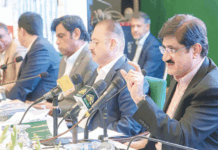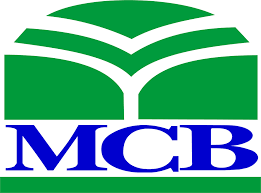The 69th Annual General Meeting of the shareholders of MCB Bank Limited was held on March 29, 2017 at Pearl Continental Hotel, Lahore under the chairmanship of Muhammad Ali Zeb.
The chairman informed the members that the Bank continued with its strong performance on account of low cost deposits base, significant uptick in advances, controlled operating expenditure and significant contribution from non-markup income. Despite compression in interest rate spreads coupled with significant maturities in high yielding government bonds, MCB Bank Limited reported Profit before Tax (PBT) of Rs 36.07 billion and Profit after Tax (PAT) of Rs. 21.89 billion.
Net markup income of the Bank was reported at Rs. 43.8 billion, down by 11.25pc over last year. On the gross markup income side, the Bank reported a decrease of Rs. 12.97 billion which was mainly on account of decreased yields on advances and investments in-line with interest rate movements. On the non-markup income front, the Bank reported a base of Rs. 16.22 billion with major contributions from fees and commissions, capital gains and dividend income.
On the interest expense side, the Bank registered a decrease of Rs 7.42 billion over last year, which commensurate with the decreasing interest rate environment and Bank’s strategy to taper off its high cost deposits during the year.
The administrative expense base (excluding pension fund reversal) recorded a nominal decrease of 0.67pc over last year depicting continued focus on cost control and deployment of cost-effective measures. On the provision front, the Bank subjectively downgraded its portfolio in the last quarter of 2016 on prudent basis.
The total asset base of the Bank was reported at Rs 1,051.81 billion presenting an increase of 4.72pc over 2015. Analysis of the asset mix highlights that net investments have decreased by Rs. 9.77 billion (-1.73pc) with net advances increased by Rs 43.86 billion (+14.42pc) over December 31, 2015.
The coverage and infection ratios of the Bank improved to 90.82pc and 5.90pc, respectively. On the liabilities side, the deposit base of the Bank recorded an increase of Rs 84.63 billion (+12.14pc) over December 2015. MCB Bank Limited continued to enjoy one of the highest CASA mixes in the banking industry of 94.13pc with current deposits increasing by 16pc and savings deposits by 11pc over December 2015. Strategic focus on current accounts resulted in increase in concentration level to 38pc of the total deposit base.
Earnings per share (EPS) for the year were declared at Rs 19.67 as compared to Rs 22.95 for 2015. Return on Assets and Return on Equity were reported at 2.13pc and 18.94pc respectively, whereas book value per share stood at Rs 105.97.
The chairman further added that Pakistan Credit Rating Agency (PACRA) through its notification dated June 24, 2016, has maintained bank’s long term credit rating of AAA [Triple A] and short-term credit rating of A1+ [A one plus].
The Bank remained a well-capitalised institution with a capital base well above the regulatory limits and Basel capital requirements. While complying with the regulatory capital requirements, the Bank has the highest cash dividend per share in the industry with regular interim dividends and remains one of the prime stocks traded in the Pakistani equity markets. Bank’s total Capital Adequacy Ratio is 19.33pc against the requirement of 10.65pc (including capital conservation buffer of 0.65pc). Quality of the capital is evident from Bank’s Common Equity Tier-1 (CET1) to total risk weighted assets ratio which comes to 16.79pc against the requirement of 6.00pc. Bank’s well capitalization also resulted in a leverage ratio of 8.59pc which is well above the regulatory limit of 3.0pc.
The audited financial statements of MCB Bank Limited and its subsidiaries were adopted by the shareholders at the AGM and final cash dividend @ 40pc recommended by the board of directors, in addition to 120pc interim dividends already paid, was approved.
Moreover, M/s KPMG Taseer Hadi & Company Chartered Accountants were appointed as the auditors of the Bank for the next financial year.























